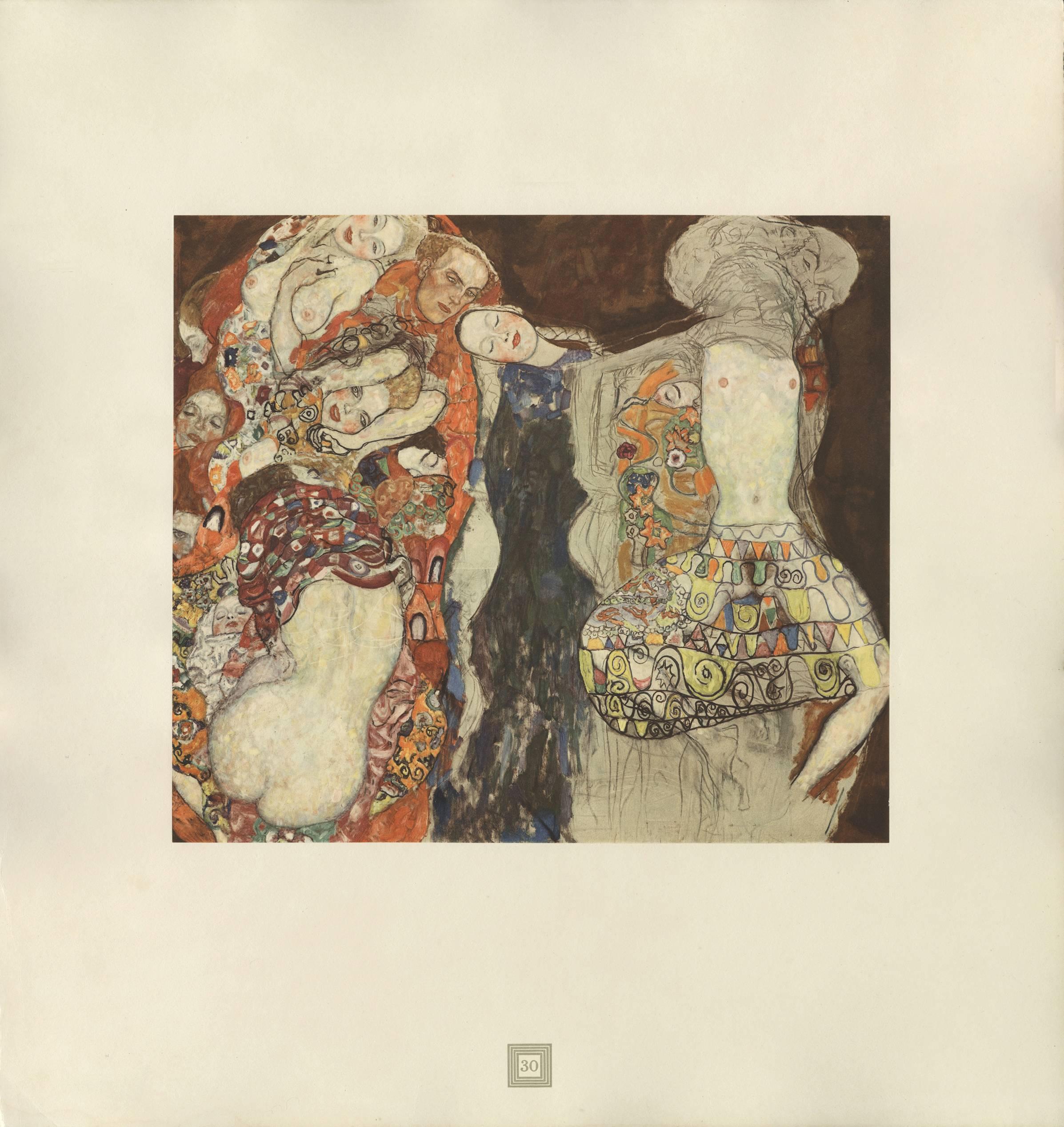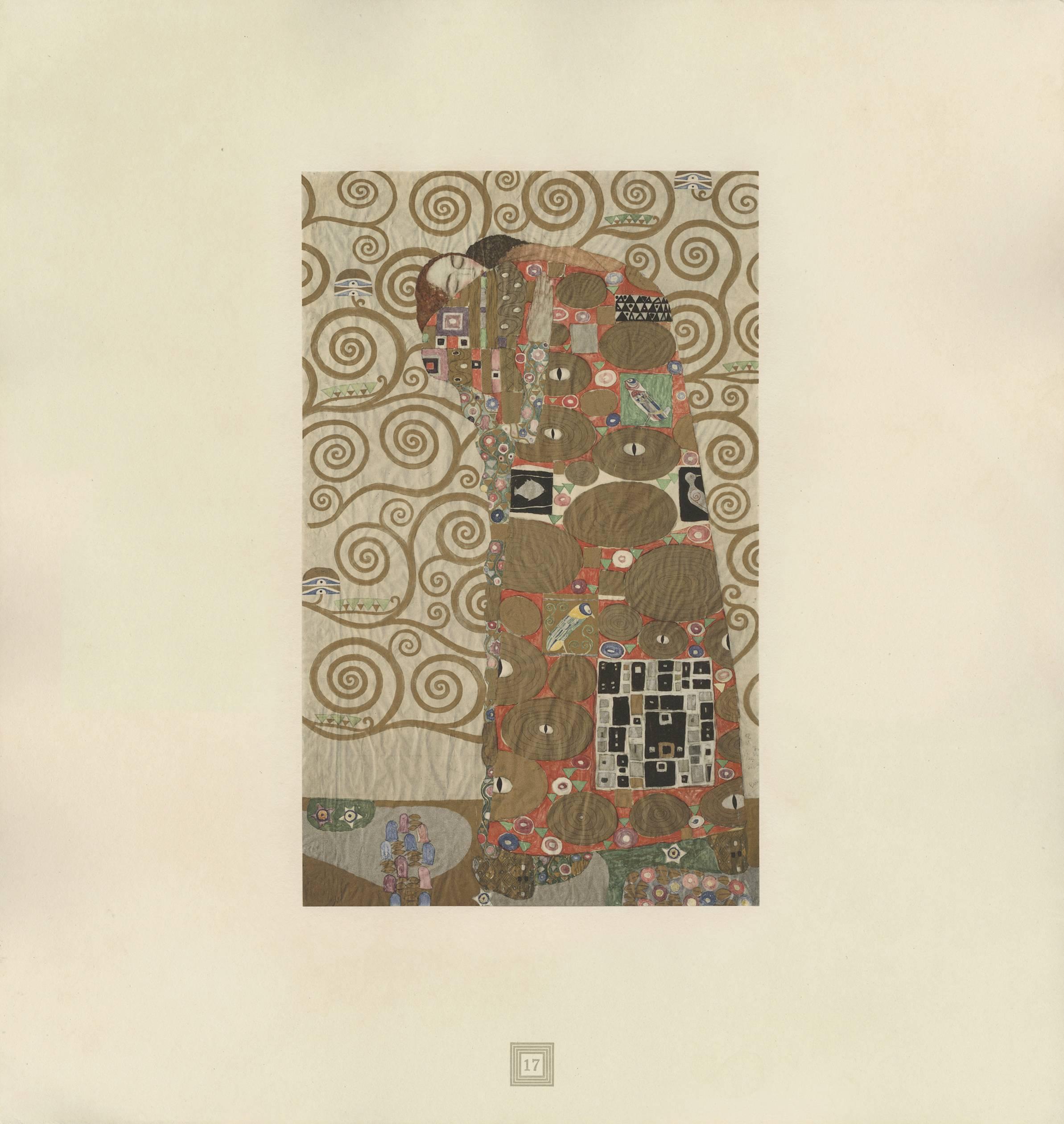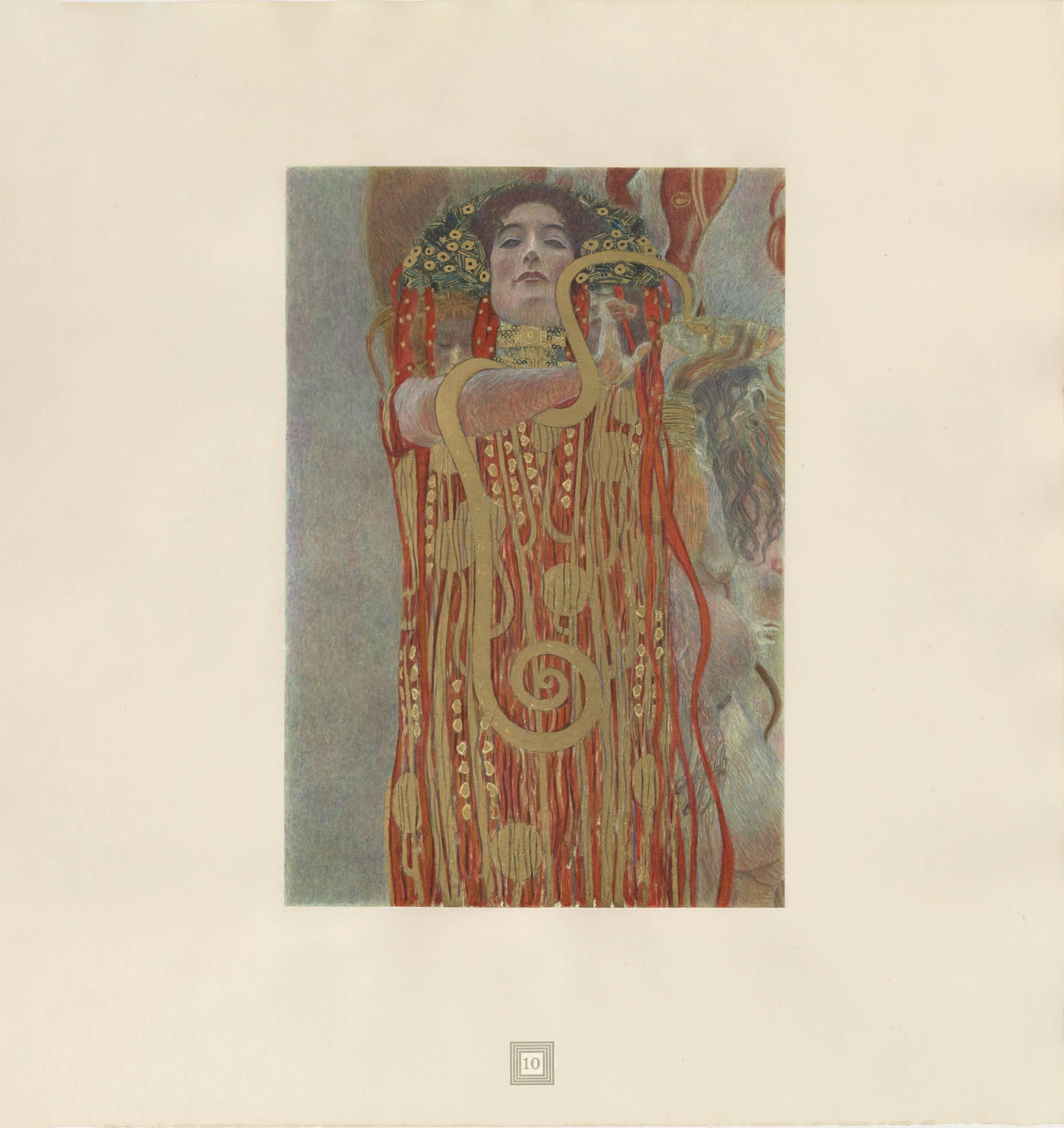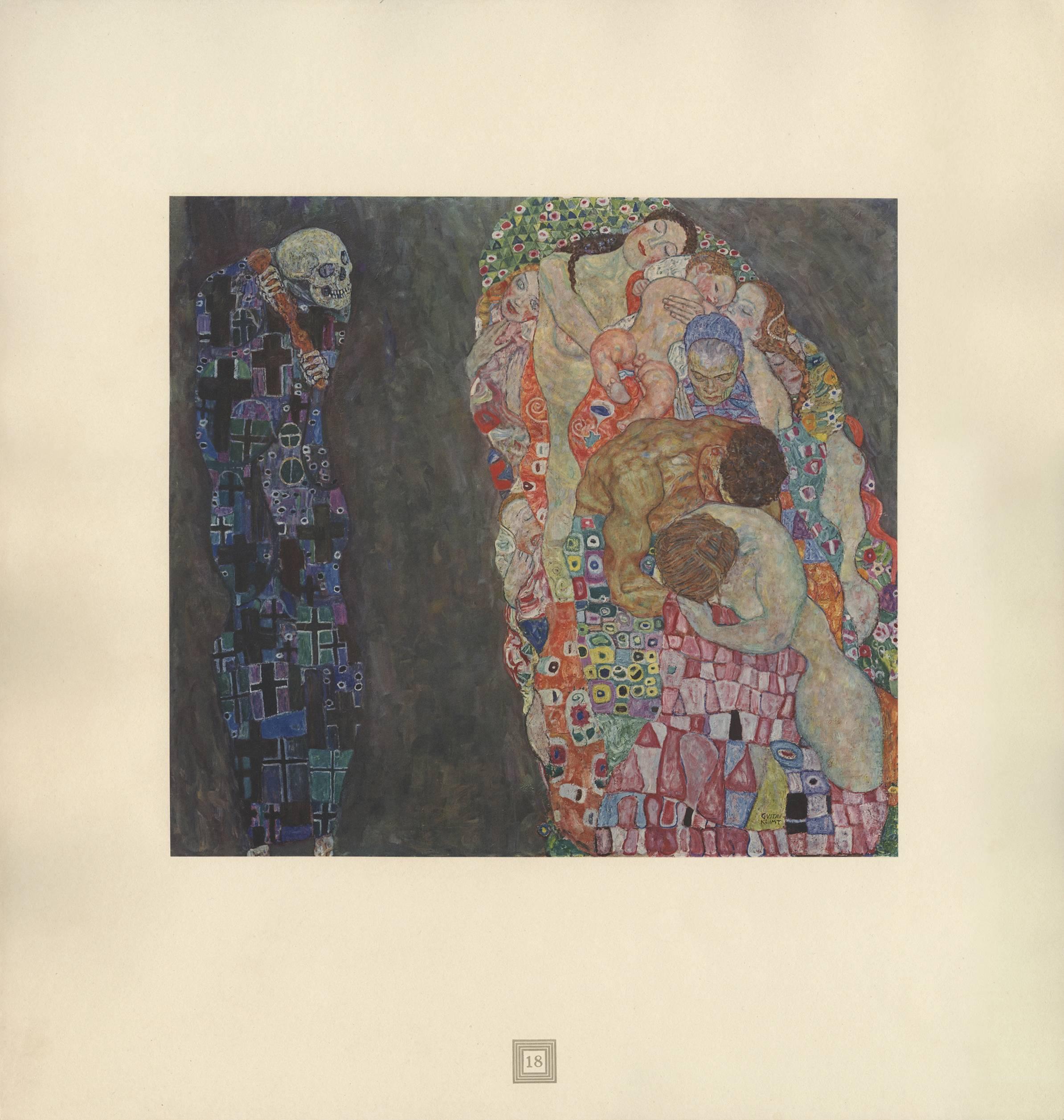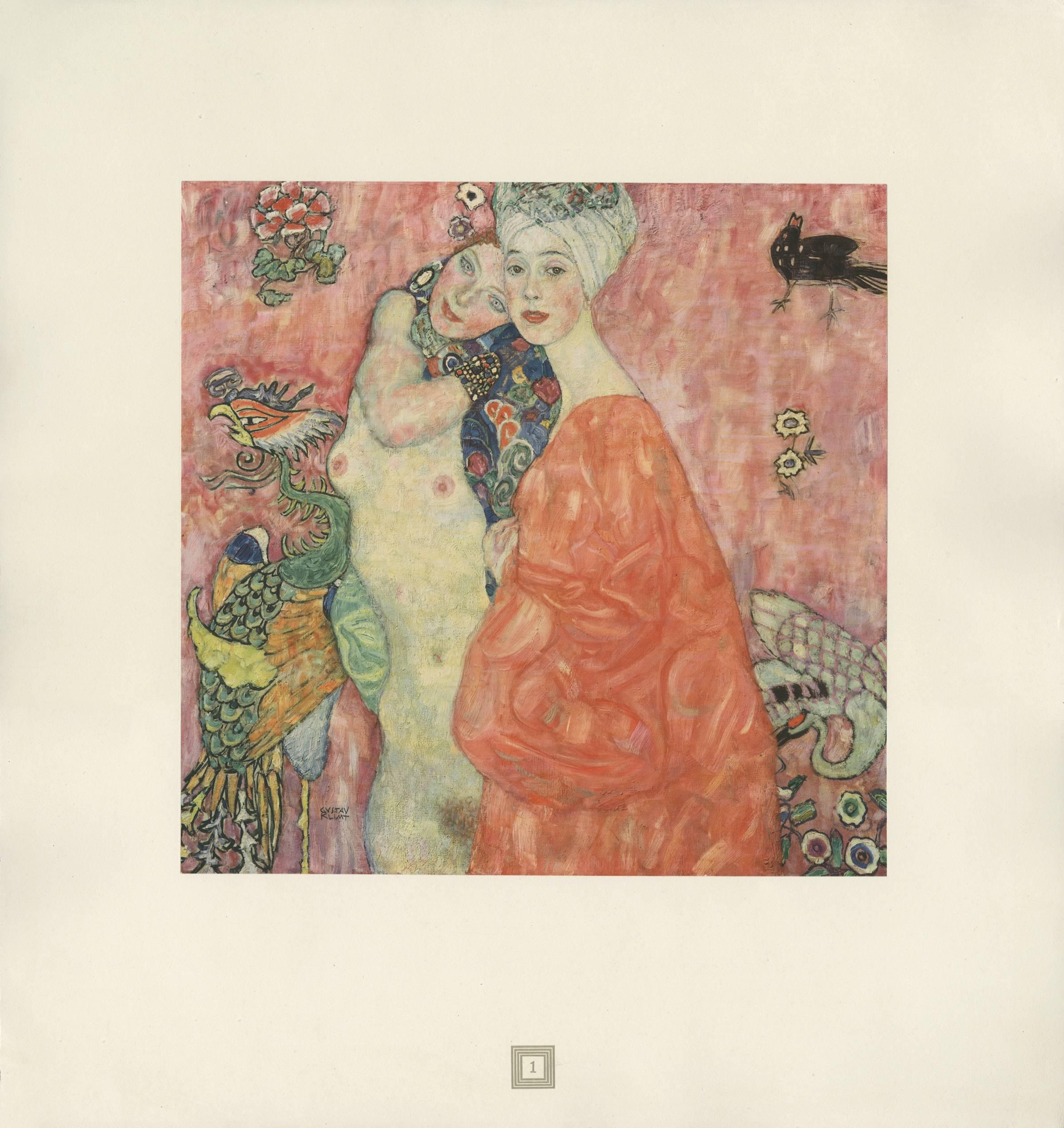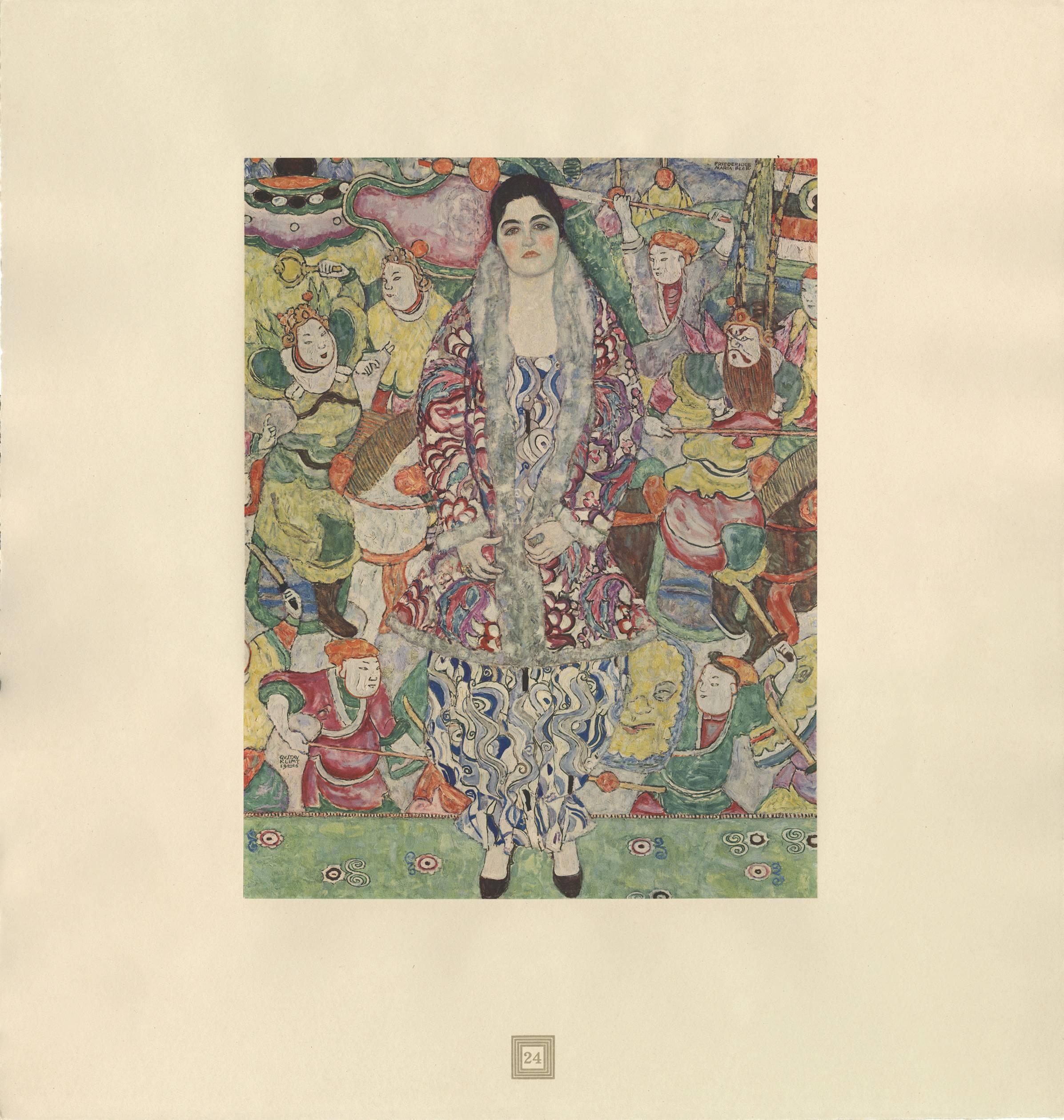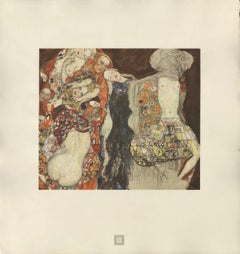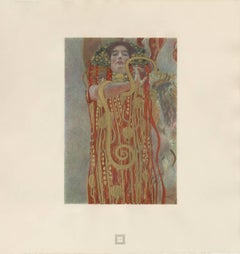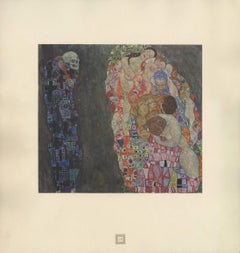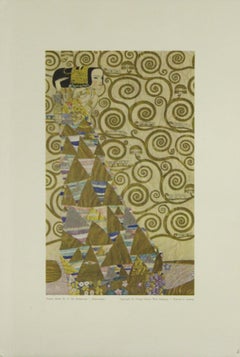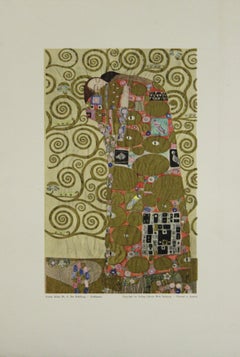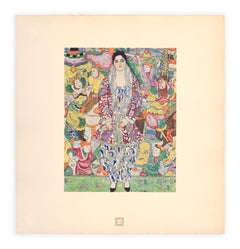Items Similar to Max Eisler Eine Nachlese folio “Expectation” collotype print
Want more images or videos?
Request additional images or videos from the seller
1 of 7
(after) Gustav KlimtMax Eisler Eine Nachlese folio “Expectation” collotype print1931
1931
$12,000
£9,243.40
€10,554.88
CA$17,118.25
A$18,724.18
CHF 9,825.99
MX$223,930.80
NOK 124,003.44
SEK 115,680.24
DKK 78,825.60
About the Item
After Gustav Klimt, Max Eisler #12, Aus dem Stoclet-Fries: Erwartung; multi-color collotype after the cartoon for the 1910-1911 mosaic frieze on the west wall of the dining hall of the Palais Stoclet, Brussels; a Tree of Life cycle in three parts expressing humankind’s yearning for Paradise; in crayon, graphite pencil, gouache and metal powders on tracing paper mounted onto canvas backing; with extensive design notes and instructions in Klimt’s own hand; cartoon in the collection of MAK: The Austrian Museum of Applied Arts / Contemporary Art (Osterreichisches Museum fur angewandte Kunst / Gegenwartskunst), Vienna.
Klimt’s Expectation (Eisler #12) and Fulfillment (Eisler #17) cartoons are intimately related Modernist treasures. Expectation, or as Klimt called her, Dancer, shows Klimt paving new roads with his interdisciplinary approach to materials and subject matter. He eliminates outmoded hierarchies of applied and fine arts and freely draws from all over the globe and all eras for this image. Ancient Egyptian tomb art and Far Eastern imagery find easy company in his gracefully rendered woman whose every mannered gesture speaks volumes to the taught anticipation she holds for her future. The spiral shapes and triangles of her sumptuous metal jewelry reverberate behind her on the bounteous tree limbs as well as on her gown. The result of so many stylized and ornamental forms is far from static; Klimt creates spatial depth in the pulsating effect of the coils while his precise placement of the triangles lends an undulating effect to the figure whose subtle movements back and forth have the illusion of momentary suspension before forward momentum propels her towards her destiny. Klimt carries the interdisciplinary nature of his artistic endeavor even further with the synesthetic relationship between his visual language and music. His carefully developed repetition of elemental forms becomes a complex device of visual musicality, achieving a similar effect of suspension as in Classical music through the early sounding of one or more tones of a succeeding chord to form a temporary dissonance which will eventually be resolved in a unifying consonance. Doing so, Klimt heightens the sense of expectation and alludes to the final panel of Fulfillment.
Whereas the mosaic frieze adorning the walls of the dining room of the private Stoclet residence in Brussels was designed by Klimt but executed by the men and women of the Wiener Werkstaate, this preparatory cartoon -created in true scale to the left panel of the west wall at Palais Stoclet- is indeed all Klimt down to the penciled grid and hand-applied metal paints. Klimt’s extensive notes and directions, his drawing, tracing and painting -experimental at times- provides true insight into his vision and the design’s development. Like the first chair and conductor of a magnificent symphony rolled into one, Klimt designed and refined much of the work for the Stoclet mosaic panels directly on the cartoons.
It is clear that Klimt felt quite proud of these cartoons and viewed them not simply as preparatory works but as fully realized paintings in their own right. Results of spectra analysis shows that Klimt added costly platinum over the silver-colored leaf metal on the figure in Expectation in an effort to avoid the silver tarnishing over time and to preserve the stunning image for posterity.
GUSTAV KLIMT EINE NACHLESE (GUSTAV KLIMT AN AFTERMATH), a portfolio of 30 collotypes prints, 15 are multi-color and 15 are monochrome, on chine colle paper laid down on heavy cream-wove paper with deckled edges; Max Eisler, Editor-Publisher; Osterreichischer Staatsdruckerei (Austrian State Printing Office), Printer; in a limited edition of 500 numbered examples of which: 200 were printed in German, 150 were printed in French and 150 were printed in English; Vienna, 1931.
2018 marks the 100th anniversary of Gustav Klimt’s death. It is a fitting time to reflect upon the enduring legacy and deep impact of his art. Recognizing this need for posterity with uncanny foresight, the publication of Gustav Klimt: An Aftermath (Eine Nachlese) provides a rare collection of work after Klimt which has proven to be an indispensable tool for Klimt scholarship as well as a source for pure visual delight.
Approximately 25 percent of the original works featured in the Aftermath portfolio have since been lost. Of those 30, six were destroyed by fire on 8 May 1945. On that fateful final day of WWII, the retreating Feldherrnhalle, a tank division of the German Army, set fire to the Schloss Immendorf which was a 16th century castle in Lower Austria used between 1942-1945 to store objects of art. All three of Klimt’s Faculty Paintings: Philosophy, Medicine and Jurisprudence (1900-1907), originally created for the University of Vienna, were on premises at that time. Also among the inventory of Klimt paintings in storage there was art which had been confiscated by the Nazis. One of the most significant confiscated collections was the Lederer collection which featured many works by Gustav Klimt such as Girlfriends II and Garden Path with Chickens. In many instances, Aftermath is our only link to these lost treasures.
Max Eisler (1881-1937), the publisher of the 1931 Aftermath portfolio, was an art historian at Vienna University specializing in modern and contemporary arts and crafts whose 1920 book on Klimt was the first Klimt monograph. He saw An Aftermath as filling-in important gaps left by the earlier print portfolios which had only featured Klimt up to 1913 and which had glossed over major art projects such as the Tree of Life frieze for the Palais Stoclet. And whereas only 10 of the 50 prints from the earlier portfolios published by H.O. Miethke were made in intricate multi-color images, Eisler augmented the earlier format by featuring half of the 30 images in stunning multi-colored collotypes. Understanding the fragile nature of the collotype printing process also reinforces this project’s distinctive and exceptional characteristics. Fragile collotype plates can not be reused. As such, this necessitates the completion of a run on the first go and also dictates a limited production number. Printed by hand, the collotypes required deft handling by the printer, Osterreichische Staatsdruckerei. A complicated and lengthy process involving gelatin colloids mixed with dichromates, the creation of 16 color separation thin glass filters to achieve the light-sensitive internegative images which could faithfully capture all of the painting’s tonal gradations and colors, exposure to actinic light, and delicate chine collie papers which allowed for greater color saturation, the printer’s collaborative role in capturing and transmitting Klimt’s nuanced paint strokes is nothing short of remarkable.
The Österreichische Staatsdruckerei (Austrian State Printing Office), was the successor to the KK Hof -und Staatsdruckerei which was founded by Emperor Franz I in 1804 and whose collotype printing innovations of Klimt’s art was first featured in H.O. Miethke’s Das Werk Gustav Klimts portfolios (1908-1913). By 1931, when Max Eisler published Gustav Klimt: An Aftermath, the printer had undergone the name change but had continued its tradition of state-of-the-art collotype art printing.
These multicolored collotype prints are perfect examples of what Klimt referred to as “major art projects.” The very nature of the print medium brings the artist and audience together in a highly accessible way. Each step in the process of their creation required a high level of technical expertise, innovative thinking and true artistic collaboration, Gesamtkunstwerk.
Ever the collaborator, Klimt was the face and voice of many modernist groups and movements: he was President of the Vienna Secession until the split in 1905 when his faction joined forces with the Wiener Werkstaate; he presided over Kunstschau 1908; and he was a founding member of the Austrian Werkbund. Polarizing at times, Klimt’s ability to stimulate discourse and debate during his own lifetime sheds as much light on his social milieu as it does on Klimt, the artist, and his art.
Klimt’s artistic vision extended beyond the studio; he was particularly interested in overcoming the separation between the artist and the consumer. In an effort to bridge that barrier and move towards true unification of artistic experience, Klimt helped develop pioneering art portfolios. In his speech at the opening of Kunstschau 1908, Klimt privileged the role of anyone who sought a relationship with art and declared that contemplation of an artwork was “an act of creative consumption.” Going so far as to radically redefine what it was to be an artist, Klimt expanded Stilkunst to: “interpret the term ‘artist’ just as broadly as the term ‘work of art.’ Not only those who create art are worthy of its name”, Klimt asserted that it encompassed: “all those capable of feeling and of valuing artistic creation.”
Often times criticized for being elitist, the democratizing nature of such a statement is striking. It is an easy leap to see the collaborative possibilities between artists like Klimt and wealthy patrons, such as the Stoclets in Brussels, but it was a radically modernist departure to include anyone as artistic collaborators of the highest merit who cultivated within themselves the capacity to truly engage with art cerebrally and on deeply emotional levels. Reverberations of this call by Klimt still can be heard today. After Klimt’s death, contemporaries like Max Eisler, who was a fellow founding member with Klimt of the Austrian Werkbund, committed themselves to promoting Gesamtkunstwerk by taking up Klimt’s torch which had lit the way for so many. The images captured and preserved for all time in An Aftermath are invitations to recognize the intrinsic value of these works of art, to engage with them, and by doing so, they serve as powerful conduits with which to forge that priceless link to Klimt himself.
- Creator:(after) Gustav Klimt (1862 - 1918, Austrian)
- Creation Year:1931
- Dimensions:Height: 19 in (48.26 cm)Width: 18 in (45.72 cm)
- Medium:
- Movement & Style:
- Period:
- Condition:
- Gallery Location:Palm Beach, FL
- Reference Number:1stDibs: LU46732710573
(after) Gustav Klimt
Gustav Klimt was an Austrian symbolist painter and a prominent member of the Vienna Secession movement. Klimt's primary subject was the female body and his works are mostly erotic in nature.
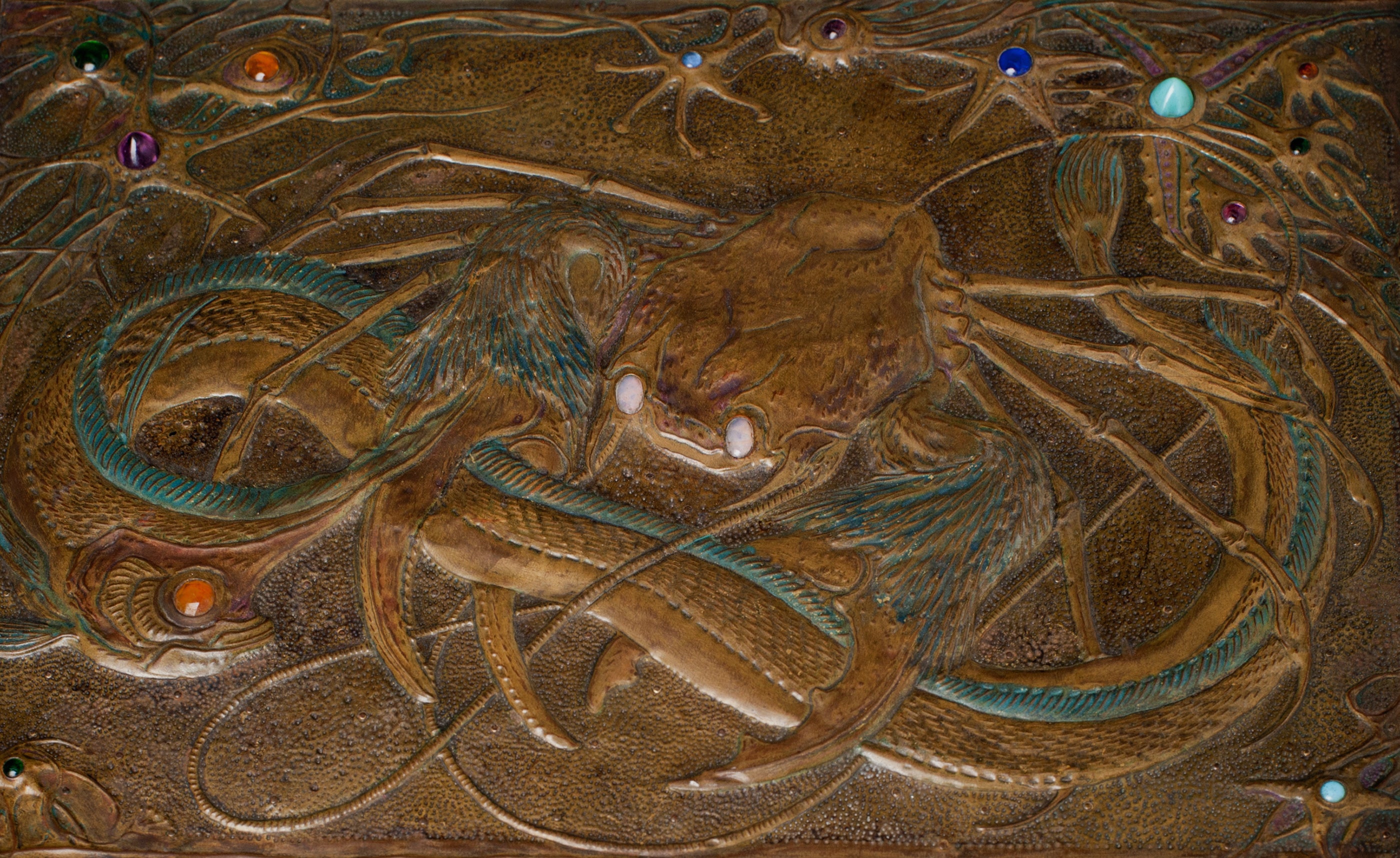
About the Seller
5.0
Vetted Professional Seller
Every seller passes strict standards for authenticity and reliability
Established in 2013
1stDibs seller since 2016
102 sales on 1stDibs
Typical response time: 7 hours
- ShippingRetrieving quote...Shipping from: Palm Beach, FL
- Return Policy
More From This Seller
View AllMax Eisler Eine Nachlese folio “The Bride” collotype print
By (after) Gustav Klimt
Located in Palm Beach, FL
After Gustav Klimt, Max Eisler #30, Brautzug; multi-color collotype after unfinished 1917/18 painting in oil on canvas.
Painted in the last months of Klimt’s life, The Bride was one...
Category
1930s Vienna Secession Figurative Prints
Materials
Paper
Max Eisler Eine Nachlese folio “The Embrace (Fulfillment)” collotype print
By (after) Gustav Klimt
Located in Palm Beach, FL
After Gustav Klimt, Max Eisler #17, Aus dem Stoclet-Fries: Die Umarmung; multi-color collotype after the cartoon for the 1910-1911 mosaic frieze on the east wall of the dining hall o...
Category
1930s Vienna Secession Figurative Prints
Materials
Paper
Max Eisler Eine Nachlese folio “Hygieia” collotype print
By (after) Gustav Klimt
Located in Palm Beach, FL
After Gustav Klimt, Max Eisler #10, Ausschnitt aus dem Bilde “Medizin”; multi-color collotype detail from Medicine, one of the faculty paintings for the Uni...
Category
1930s Vienna Secession Figurative Prints
Materials
Paper
Max Eisler Eine Nachlese folio “Allegory of Life and Death” collotype print
By (after) Gustav Klimt
Located in Palm Beach, FL
After Gustav Klimt, Max Eisler #18, Der Tod und das Leben; multi-color collotype after original painting (1910-1916) in oil on canvas.
GUSTAV KLIMT EINE NACHLESE (GUSTAV KLIMT AN AF...
Category
1930s Vienna Secession Figurative Prints
Materials
Paper
Max Eisler Eine Nachlese folio "Girlfriends II" collotype print
By (after) Gustav Klimt
Located in Palm Beach, FL
After Gustav Klimt, Max Eisler #1, Die Freundinnen II; multi-color collotype after 1916/17 painting in oil on canvas which was destroyed by fire in May 1945 at Immendorf Castle Lower Austria.
Eisler’s choice to begin his 1931 portfolio of works by Klimt with Girlfriends II was both bold and prescient. Just 14 years later, the painting was tragically destroyed in a fire. With such a loss, this rare and exquisite image is all the more valuable by virtue of having been made in color. In works from his late period, Klimt continued his fascination with exploring female dynamics and their various forms of love. Girlfriends II is a fine example of how space, color and ornament play a noticeable role in the evolution of his symbolic language. Wide swaths of space in the background as well as the two female forms create the structure. Klimt’s strong brushstrokes show a painterly quality and a new move toward abstraction which feels very far away from his earlier work. Nor should Klimt’s economy of line be overlooked. His draughtsmanship is what infuses the female bodies with movement, emotion and a profundity of life. Both women confront the viewer’s gaze unselfconsciously, as if they are modern-day Viennese women stepping out of a Klimtesque ukiyo-e print. Characteristic of this late period, Klimt uses ornament...
Category
1930s Vienna Secession Figurative Prints
Materials
Paper
Max Eisler Eine Nachlese folio "Portrait of Friederike Marie Beer" collotype
By (after) Gustav Klimt
Located in Palm Beach, FL
After Gustav Klimt, Max Eisler Plate #24, Bildnis Friederike Maria Beer; multi-color collotype after the 1916 painting in oil on canvas.
GUSTAV KLIMT EINE NACHLESE (GUSTAV KLIMT AN ...
Category
1930s Vienna Secession Figurative Prints
Materials
Paper
You May Also Like
Expectation-Metallic Poster. Printed in Austria
By Gustav Klimt
Located in Chesterfield, MI
Poster. Measures 16 x 11 inches and is Unframed. Good/Fair Condition-signs of wear consistent with age and handling.
Category
Late 20th Century Portrait Prints
Materials
Lithograph
$140 Sale Price
20% Off
Fulfilment-Metallic Poster. Printed in Austria
By Gustav Klimt
Located in Chesterfield, MI
Poster. Measures 16 x 11 inches and is Unframed. Good/Fair Condition-signs of wear consistent with age and handling (please see secondary images for details).
Category
Late 20th Century Portrait Prints
Materials
Lithograph
$140 Sale Price
20% Off
Death and Life by Gustav Klimt, Das Werk lifetime collotype, 1908-1912
By Gustav Klimt
Located in Chicago, IL
Original collotype created from Gustav Klimt’s Death and Life, painted in 1908. Published and edited by Verlag H.O. Miethke and printed by k.k. Hof- und St...
Category
Early 1900s Vienna Secession Prints and Multiples
Materials
Paper
Portrait of Friederike Maria Beer, Gustav Klimt An Aftermath collotype, 1931
By (after) Gustav Klimt
Located in Chicago, IL
Original 1931 collotype created from Gustav Kilmt’s Portrait of Friederike Maria Beer, oil on canvas, 1916. Published by Max Eisler and printed by Österreichischer Staatsdruckerei (Austrian State Printing Office), Vienna, in an edition of 500.
In 1931, Max Eisler published the most notable posthumous collection of Gustav Klimt works to date. Using a complex gravure process, Klimt’s original oil paintings were painstakingly reproduced as collotypes on a handmade, deckled-edge cream wove paper. This world-class example of collotype captures the superb resolution and color-richness and ornamentation of the original 1916 oil painting.
"Friederike-Maria suggested that Klimt should paint her in a Viennese Workshop dress; she wore these exclusively. She was also very proud of a fur coat she owned, particularly during the hardship of the First World War, and Klimt decided that she should wear the coat too, but inside out, so that the decorative lining, also by the Viennese Workshop, was visible.
Klimt decided to make use of an imaginary oriental screen...
Category
1930s Vienna Secession Prints and Multiples
Materials
Paper
Beethoven Frieze (detail) by Gustav Klimt, Das Werk collotype, 1908-1912
By Gustav Klimt
Located in Chicago, IL
Original collotype created from a detail of Gustav Klimt’s Beethoven Frieze. Published and edited by Verlag H.O. Miethke and printed by k.k. Hof- und Staatsdruckerei, Vienna, in an e...
Category
Early 1900s Vienna Secession Prints and Multiples
Materials
Paper
Gustav Klimt, Erwartung, 1931 (after)
By Gustav Klimt
Located in Southampton, NY
This exquisite heliogravure and collotype with metallic inks after Gustav Klimt (1862–1918), titled Erwartung (Expectation), from the folio Gustav Klimt, Eine Nachlese (Gustav Klimt,...
Category
1930s Symbolist Figurative Prints
Materials
Lithograph
More Ways To Browse
Ancient Egyptian Art
Egyptian Tomb
Retro Spoleto Posters
Richard Lindner Collage
Robert Longo Cindy
Roy Lichtenstein Thinking Of Him
Ruth Waddy
Sadao Watanabe. On Sale
Salvador Dali Argillet
Salvador Dali Artist Proof
Salvador Dali Canto 7
Salvador Dali Don Quixote Etching
Salvador Dali Exhibition Poster
Salvador Dali Icarus
Salvador Dali Judgement
Salvador Dali Libra
Salvador Dali Litho
Salvador Dali Lobster
